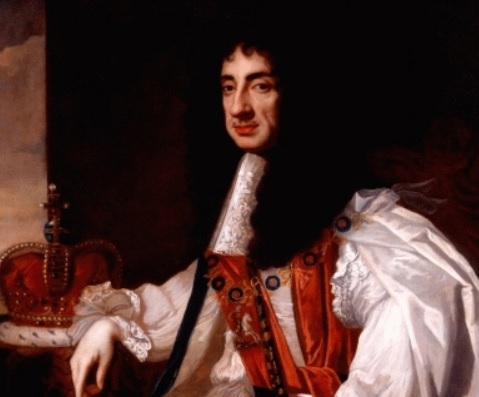National Portrait Gallery, Public domain, via Wikimedia Commons
It was a rumour that involved a king and his niece and a question about whether their relationship was too scandalous for the time period. Did Richard III want to marry his niece Elizabeth of York?
One of the most turbulent periods in English history was the Wars of the Roses and the conflicts between different royal dynasties. In a previous post outlining the Royal History Mystery of what happened to the Princes in the Tower, we discussed how Richard III came to be king at the expense of his nephew, Edward V, and how his actions had his deceased elder brother’s children declared illegitimate.
As the eldest child of Edward IV and Elizabeth Woodville, Elizabeth of York was a prize for marriage. In her childhood, she was betrothed to the Dauphin of France (though the marriage never came to fruition) and she grew up to be one of the most beautiful women in the country.
After her father died and her uncle claimed the throne, she joined her mother and sisters in sanctuary. In 1484, Elizabeth and her sister, Cecily, left sanctuary and went to stay at the court of Richard III and his queen, Anne Neville (the youngest daughter of Richard Neville, Earl of Warwick, and one of the richest women in England).
While at court, Elizabeth had pride of place in proceedings and was outfitted in the finest clothing on offer. At times, she and Queen Anne wore matching clothes even though royal protocol would have dictated that nobody dress like the queen or in equal refinement.
With Richard’s deep unpopularity and the rising support of Henry Tudor’s cause, his enemies began spreading stories that the king planned to marry his niece.
Once the rumours were out in the open, it became a source of court intrigue. Queen Anne was fatally ill by the time her niece came to court and her only child with Richard had predeceased his parents. Richard III was looking at a future without wife or issue. And it’s likely that his enemies and Tudor supporters were looking for any excuse to further damage his reputation.
Shortly after Queen Anne passed away, in March 1485, Richard had Elizabeth taken away from court and sent to Sheriff Hutton castle while he prepared negotiations to marry Joan, the Princess of Portugal. His negotiations also included a marriage between Elizabeth and Manuel of Portugal, the country’s future king.
These plans were called off when news of the impending Tudor invasion reached Portugal,and Richard had to prepare to keep his crown instead of planning a second marriage. In August 1485, Richard was slain at the Battle of Bosworth and lost his crown to Henry Tudor, who would claim the English throne as Henry VII.
Henry VII would later marry Elizabeth of York, uniting the Houses of Tudor and York. The royal couple were wed on 14 January 1486 and Elizabeth finally became a queen. To this day, she is the only English royal who has ever been the daughter of a king, the sister of a king, the niece of a king, and the wife of a king.
Though Henry and Elizabeth had several children, only four survived to adulthood: Arthur, Prince of Wales (who died in 1502); Henry, who would later become Henry VIII; Margaret, future Queen of Scots; and Mary, future Queen of France.
Their marriage was evidently a love match and Henry VII was said to be devastated when Elizabeth died of a post partum infection in February 1503. He never remarried and died in 1507. He was succeeded by his second son, Henry VIII.
Did Richard III want to marry his niece, Elizabeth of York?
It’s unlikely, barring any new discoveries of letters that say otherwise, that we’ll ever have conclusive evidence that Richard III did or did not want to marry his niece.
The existence of a letter, purportedly written by Elizabeth, paints evidence of a romantic relationship—or romantic designs on her uncle. In the letter, written to John Howard, Duke of Norfolk and sent while she was staying at Sheriff Hutton, Elizabeth asked him to “be a mediator for her…to the King…her only joy.” Some believe the letter doesn’t exist, others believe her meaning was misconstrued and others believe the letter exists but that the contents were a lie.
Avunculate marriages, between a niece and an uncle, weren’t unheard of in European royal houses at the time and while there was debate about the close level of relationship involved, papal dispensations were given for such unions to take place. The marriage would have been possible but whether either party desired it is debatable. At worst, it is another piece of the Tudor propaganda which aimed to completely destroy Richard’s reputation.

